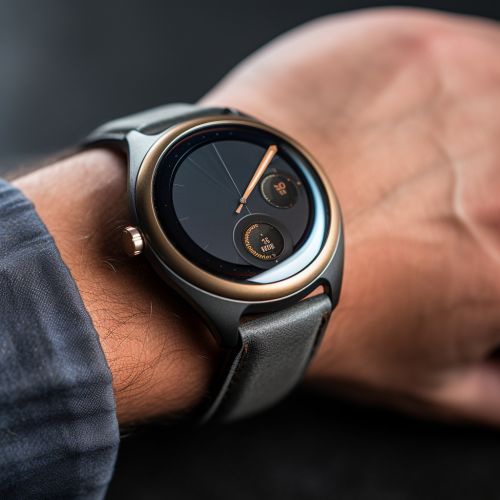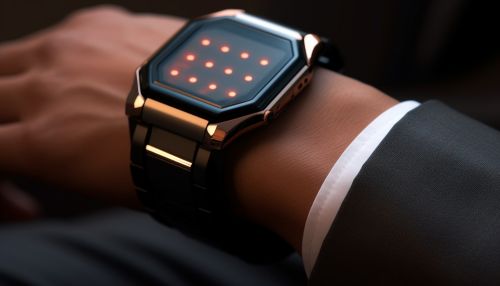Smartwatch
Introduction
A Smartwatch is a wearable computing device that closely resembles a wristwatch or other time-keeping device. In addition to telling time, smartwatches provide a variety of functionalities, often incorporating features that are found in smartphones. These may include mobile applications, a mobile operating system, and the ability to make phone calls or send text messages. Some smartwatches also have fitness tracking capabilities, such as heart rate monitoring and step counting.
History
The concept of a smartwatch can be traced back to the early 1970s, when companies like Pulsar (Hamilton Watch Company) and Hewlett-Packard began to develop digital watches that incorporated calculators or personal digital assistants. However, the term "smartwatch" was not coined until the 2000s, when tech companies began to release watches that incorporated smartphone-like features.
Technology
Smartwatches are powered by various operating systems, such as Android Wear, watchOS, and Tizen. These operating systems support applications that provide users with smartphone-like functionality on their wrists. The smartwatch interfaces with the user's smartphone via Bluetooth, allowing the user to control and access features on their phone without needing to remove it from their pocket or bag.
Functionality
Smartwatches offer a variety of functionalities, depending on the model and the operating system. These functionalities may include:
- Mobile apps: Many smartwatches can run apps, similar to a smartphone. These apps provide a variety of functionalities, from weather updates to fitness tracking to email and text notifications.
- Fitness tracking: Many smartwatches include fitness tracking features, such as a pedometer or heart rate monitor. These features allow users to track their physical activity and health metrics.
- Communication: Some smartwatches allow users to make and receive phone calls, send and receive text messages, and view notifications from their smartphone.
- GPS: Some smartwatches include built-in GPS, allowing users to track their location and navigate without needing to carry their smartphone.
Design
Smartwatches come in a variety of designs, from traditional watch designs to more modern and sleek designs. Some smartwatches have a touchscreen interface, while others use physical buttons or a combination of both. The watch face can often be customized to display a variety of digital or analog designs.
Market
The smartwatch market has grown significantly since the introduction of the first smartwatches. Major tech companies such as Apple, Samsung, and Google have released their own smartwatches, contributing to the growth of the market. The smartwatch market is expected to continue to grow in the coming years, as more consumers adopt wearable technology.
Future Developments
The future of smartwatches is expected to see continued advancements in technology and functionality. This may include improvements in battery life, the development of more sophisticated health and fitness tracking features, and the integration of artificial intelligence technologies.


